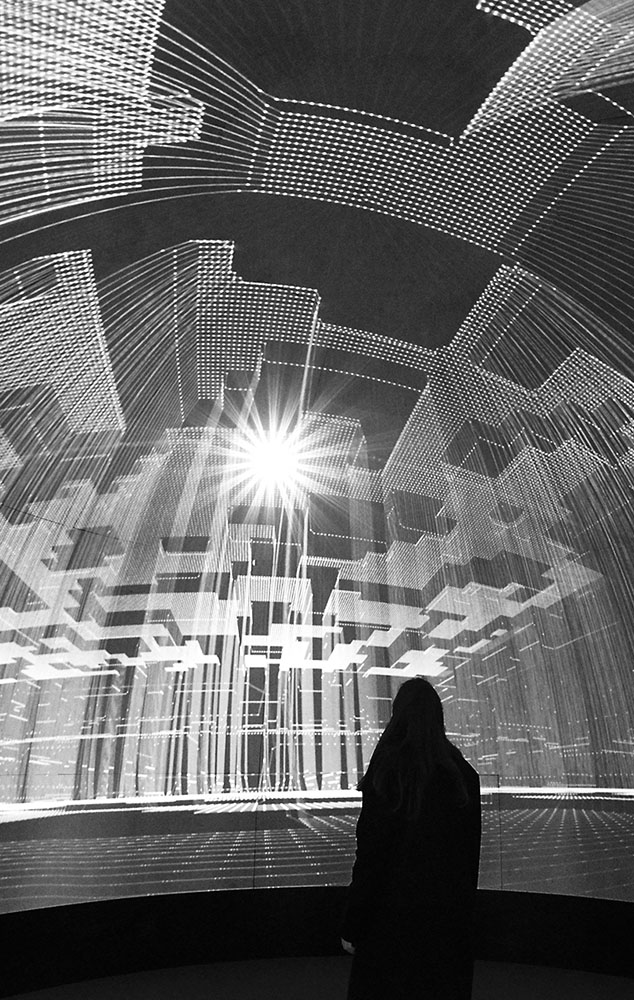
Robert Mathy
wind
In the live improvisation “wind” Robert Mathy approaches the sonic vocabulary of natural forces, by examining the acoustic properties of air currents with purpose build instruments.

wind
In the live improvisation “wind” Robert Mathy approaches the sonic vocabulary of natural forces, by examining the acoustic properties of air currents with purpose build instruments.

Equilibrium Variant
This work has the purpose of exploring the occurrence of the Larsen effect (also known as feedback) through the use of mobile devices in a three-dimensional space. The distinctive screech of the Larsen effect typically occurs when a microphone catches the sound emitted by a speaker. It engages when the microphone is located too close to the speaker, and gets in the way of its frequency. The microphone amplifies and reproduces the speaker’s frequency with an ever-increasing width, virtually unlimited, in practice stopped by the amplifier’s clip. On a ground support, two mechanical arms are located. At the end of one arm there is a microphone, and on the end of the other there is a speaker. A software, created with this specific purpose, manages the position of the arms in a dynamic way, and provides that the distance between the microphone and the speaker never causes the amplifier to clip. This way, the system tends to reach an equilibrium that is physically impossible to attain. The struggle to balance creates an acoustic and visual dimension that is never the same: the frequency of feedback and the movements of the mechanical arms are always different and change in real time.

Supermassive Black Holes
Supermassive Black Holes is an acoustic ceiling installation for the main lobby of the Los Angeles Chamber of Commerce. The design is part of a series of projects in which we work with small primitives that are aggregated into a larger whole. In this case, there are over 10,000 felt cones stitched together into three gigantic, 20’ tall, hanging felt vortexes that that absorb sound through its materiality and geometry. The thousands of cone shape parts trap and disperse sound waves while softening the overall acoustic quality of the space.

Pianographique
Pianographique is a series of collaborations of real time visual artist Cori O’Lan and Maki Namekawa. The visualisations are not videos that are more or less synchronous to the music and it is also not the musician’s playing to prefabricated material, they are jointly created together in the moment of the performance. As with most of Cori O’Lan’s visualizations, all graphic elements are derived directly from the acoustic material, i.e. the sound of the music. For this purpose, the piano is picked up with microphones and these signals are then transformed by the computer into a multitude of information about frequency, pitch, volume, dynamics, etc… This information, in turn, is used to control the graphics computer, create graphical elements or modify them in many ways. Since these processes take place in real time, there is a direct and expressive connection between the music and visual interpretation. The visualization is actually not “created” by the computer but much more by the music itself – the computer is rather the instrument, the brush operated, played by the music.

Latent Space
In Latent Space fine lines weave virtual spaces around the viewers. The architecture that manifests is highly fragile — the space grows, shrinks, collapses. The acoustic dimension is also deeply spatial — slowly morphing soundscapes float around the dome, enveloping the observers in sound and image. The omnipresence of the virtual realm is transposed into the physical space of the dome to unmask the often proclaimed boundlessness of digital space. The work tests and investigates the spatial effects of the dome, which serves as a metaphor for the virtual net that always surrounds us.